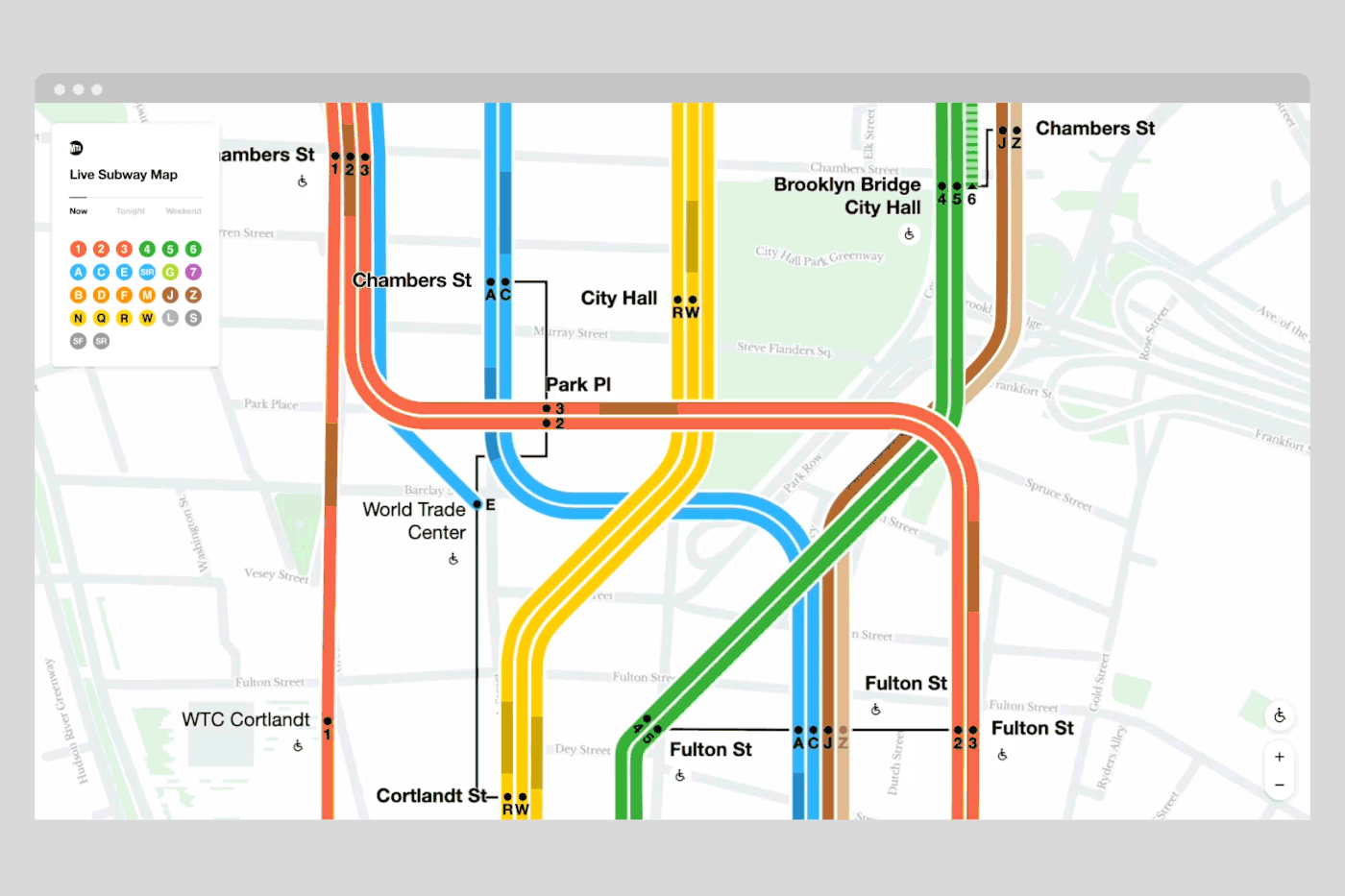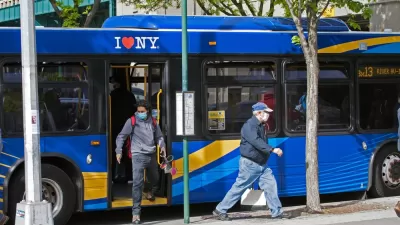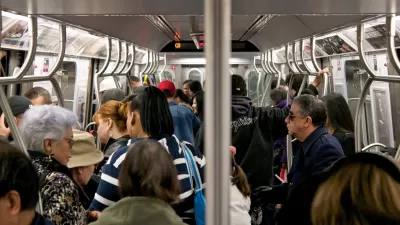There's a new chapter, and maybe an end, for the "Great Subway Map Debate."

Christopher Bonanos reports: "Today, the MTA is unveiling its new digital map, the first one that uses the agency’s own data streams to update in real time."
After giving a background on the historical precedents for the new map, Bonanos suggests that the map is perhaps the best of both worlds: a combination of the aesthetic accomplishments of the map designed by Massimo Vignelli in the early 1970s, and the more practical, user-focused approach designed by Michael Hertz Associates later the same decade.
"Vignelli’s diagram was a joy to look at and was nearly useless as an aboveground navigation tool. Hertz and Tauranac’s map functioned pretty well as a map to getting around town but inspired comparatively little delight," writes Bonanos to describe the precedent map designs.
The new map, however, is literally contemporary, writes Bonanos:
It’s so thoroughly up-to-the-moment that you can watch individual trains move around the system on your phone. Pinch your fingers on the screen, and you can zoom out to see your whole line or borough, as the lines resolve into single strands. Drag your fingers apart, and you’ll zoom in to see multiple routes in each tunnel springing out, widening into parallel bands — making visible individual service changes, closures and openings, and reroutings. Click on a station, and you can find out whether the elevators and escalators are working.
Image courtesy of the Metropolitan Transportation Authority.
The new map is a product of Work & Co, and an expert as august as Michael Beirut has declared the new map to be "legitimately revolutionary," according to Bonanos. The article includes a lot more detail about how the leadership at the New York Metropolitan Transportation Authority kicked off the project and guided the work to its revolutionary completion.
FULL STORY: First Look: New York’s Digital Subway Map Comes Alive Today

Manufactured Crisis: Losing the Nation’s Largest Source of Unsubsidized Affordable Housing
Manufactured housing communities have long been an affordable housing option for millions of people living in the U.S., but that affordability is disappearing rapidly. How did we get here?

Americans May Be Stuck — But Why?
Americans are moving a lot less than they once did, and that is a problem. While Yoni Applebaum, in his highly-publicized article Stuck, gets the reasons badly wrong, it's still important to ask: why are we moving so much less than before?

Using Old Oil and Gas Wells for Green Energy Storage
Penn State researchers have found that repurposing abandoned oil and gas wells for geothermal-assisted compressed-air energy storage can boost efficiency, reduce environmental risks, and support clean energy and job transitions.

Minneapolis Bans Rent-Setting Software
Four cities have enacted restrictions on algorithmic software that can inflate rent costs.

Oakland to Add 244 New EV Chargers
Oakland plans to launch its new charging network at eight locations by the end of 2025.

Jane Goodall Inspires with Message of Hope, Resilience, and Environmental Action
Speaking in Pasadena, Jane Goodall offered a hopeful and inspirational message, urging global compassion, environmental responsibility, and the power of individual action to shape a better future.
Urban Design for Planners 1: Software Tools
This six-course series explores essential urban design concepts using open source software and equips planners with the tools they need to participate fully in the urban design process.
Planning for Universal Design
Learn the tools for implementing Universal Design in planning regulations.
Heyer Gruel & Associates PA
City of Moreno Valley
Institute for Housing and Urban Development Studies (IHS)
City of Grandview
Harvard GSD Executive Education
Salt Lake City
NYU Wagner Graduate School of Public Service
City of Cambridge, Maryland






























